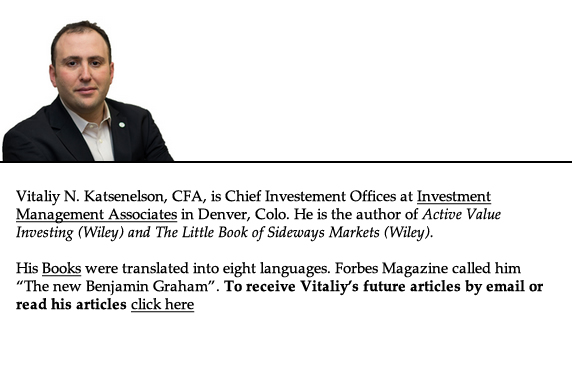We just finished our VALUEx Vail conference. It was a superspreader of ideas –but not the virus. Forty value investors came from four countries; 38 were vaccinated, one took and passed a COVID test the day of the conference, and one had antibodies from a previous COVID infection. Not a single attendee got sick at the conference!
We were given permission to share some of the presentations from the conference. You can find them here, and you can also browse presentations from previous years. (To view them, enter the email address this article was sent to.)
I am going to take a break from writing about the economy, the market, and stocks for a little while. Over the last year and a half, I dedicated my writing energy to these topics and the new book. I completely neglected writing about classical music. I still listen to it daily, but I have missed going down the rabbit hole of learning and writing about it during my early morning creative adventures. Also, as I look at the stock market and economic landscape, I realize that I have very little new to say.
But don’t you worry.
I’ll pick out and send some of my best, most important, and still relevant articles on the stock market and economy that I wrote over the last year and a half. I’ll provide updated thinking on them. In addition, I’ll share personal observations on various topics. But most importantly, I’ll include my new music missives with them. Their subject line will say “Revisit…”; that way, if you are not interested in the new music and have already read the investment and economic articles, you can skip them.
Over next few weeks we’ll explore one of the most underrated figures in classical music, Alexander Siloti (often spelled Ziloti, which is an accurate transcription from Russian). He is little known today, but there must have been something special about Siloti: Tchaikovsky, Rachmaninoff, Stravisnky, and Liszt all dedicated music to him.
I’ll divide our exploration into several parts. Today we are going to discuss Siloti and Rachmaninoff.
Siloti was born in Kharkiv, Ukraine (then Imperial Russia) in 1863. He studied at the Moscow Conservatory under Tchaikovsky. He had such great potential as a pianist that in 1880 Russia sent him to Weimar, Germany to study under the king of piano himself, Franz Liszt. Liszt did not charge for his classes, but the Russian government paid for Siloti’s room and board and even gave him 10,000 rubles for gambling! (I hope my son, Jonah, a student at CU Boulder, doesn’t get any ideas and will not start asking me for an allowance to play Draft Kings). Siloti studied under Liszt for six years until Liszt’s death in 1886.
We need to pause to explain the significance of Siloti’s studying with Liszt. The piano went through a significant transformation in the late 18th and early 19th century. Just as Elon Musk accelerated the transition from internal combustion engine to electric cars, Franz Liszt was the driving force that accelerated the transition of the piano from an instrument used for private performances in living rooms to a powerful orchestra of one whose sound fills large auditoriums. Liszt helped to transform the piano into a more robust instrument that could handle a much greater range of music – and tolerate more abuse from the enthusiastic pianist!
Liszt changed the way piano sounded by developing new playing technique and writing much more challenging and ambitious music for piano. He rewrote “old” music for the new instrument, transcribing Wagner’s operas, Beethoven’s symphonies, etc. Liszt’s piano started to sound like its own orchestra. I am just scratching the surface here. If this topic interests you, I wrote a more in-depth essay on Liszt and the evolution of the piano, which you can read here.
Back to Siloti. After studying under Liszt, Siloti taught for three years at the Moscow Conservatory. One of his students happened to be none other than his first cousin, Sergey Rachmaninoff. Rachmaninoff was born 1873, so he was ten years younger than Siloti (he was only thirteen when Liszt died). We will never know for sure, but can make an educated guess that Siloti was the likely link that connected Liszt to Rachmaninoff. Because of Siloti, Rachmaninoff’s piano concertos are very Lisztonian. They are incredibly technical and demanding of the performer and squeeze out every ounce of the piano’s might. Neither Liszt’s nor Rachmaninoff’s piano music was technically demanding just to tax the pianist. The increased difficulty was the price to pay for richer, bigger-than-life sound.
Let’s listen to the cadenza (solo part) from Rachmaninoff Piano Concerto No. 3 (one of my favorite concertos). Note that you are listening to just one instrument – a piano that sounds like a full orchestra.
And then listen to Liszt’s Sonata in B Minor (minutes 7–9). You’ll be reminded of Rachmaninoff, as the piano goes from being a lyrical instrumental instrument to suddenly erupting into an orchestra.
Now when you listen to Rachmaninoff’s 3rd piano concerto you can thank Russia for giving Siloti 10,000 rubles to go gamble in Germany and study under Liszt and then transfer his knowledge to his talented cousin Sergey.





